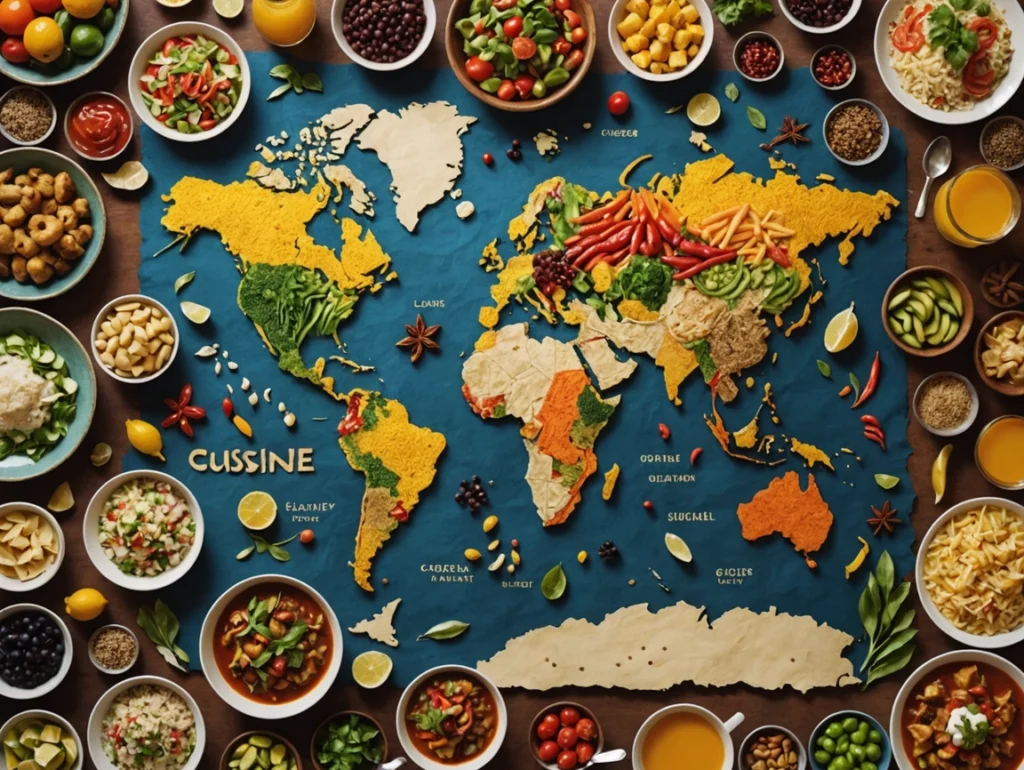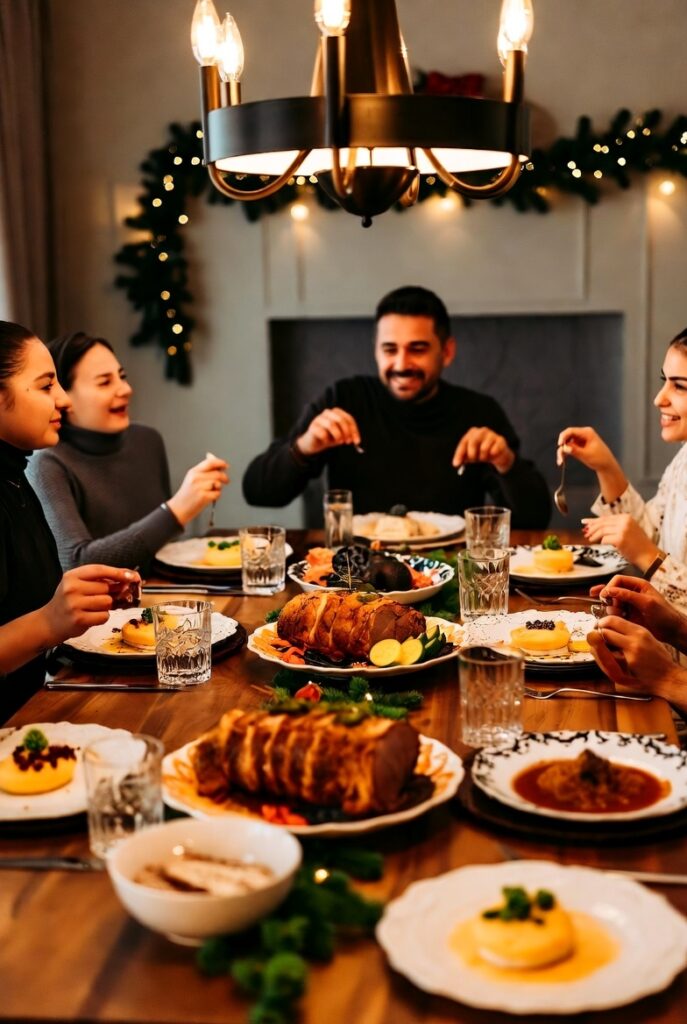Edible Heritage: The Roots of Our Culinary Identity

🍽️ The Story of Cuisine: How Food Became a Cultural Identity
Introduction — What Is Cuisine?
When we hear the word “cuisine,” we often think of food — the meals we eat and the flavors we enjoy. But the word carries a much deeper meaning. It comes from the French word cuisine, meaning “kitchen,” which in turn comes from the Latin coquina, meaning “to cook.” Over time, the meaning evolved from simply referring to cooking to representing a distinctive style of preparing and serving food that reflects a country’s culture, geography, and history.
Cuisine is the heart of civilization. It tells the story of who we are, where we come from, and how our traditions were shaped. Every dish — from Japanese sushi to Italian pasta — speaks of geography, migration, and generations of learning.
You may like to read:
The World’s Most Expensive ChocolateHistorical Background of Cuisine
The history of cuisine begins as early as civilization itself. Ancient people learned to cook using what was available in their environment. In tropical Asia, rice grew easily, so rice-based meals became common. In the Middle East, wheat and barley thrived, leading to bread-making. In coastal regions, seafood dominated the diet. Thus, geography and climate first shaped cuisines.
Trade and exploration changed everything. The Silk Road and the Spice Trade connected Asia, the Middle East, Africa, and Europe. Spices like cinnamon, pepper, and nutmeg became precious commodities, influencing royal kitchens and peasant meals alike.
When Christopher Columbus and others explored the Americas, new ingredients like tomatoes, potatoes, chili, and corn traveled across continents, reshaping cuisines forever. Italian food, for example, was transformed when tomatoes arrived from the New World. Indian curries became richer with chili and potato.
Colonization also influenced food culture. The British adopted tea from China and curry from India. The French left behind their baking and sauce techniques in Vietnam and North Africa. Over time, these exchanges created fusion cuisines — new blends of old traditions.
The Cultural Meaning of Cuisine
Cuisine is not just about ingredients; it’s a reflection of identity. It expresses values, beliefs, and emotions. For example:
- Italian cuisine celebrates simplicity and family. Meals are social events filled with love and laughter.
- Japanese cuisine values precision, balance, and respect for nature. Every dish aims for harmony in color, texture, and taste.
- Bangladeshi cuisine is vibrant, rich in spices, and rooted in hospitality — serving guests is an act of honor.
- French cuisine focuses on refinement, presentation, and flavor balance — a symbol of culinary artistry.
Food connects generations. Recipes are passed down from mothers to daughters, teachers to students, preserving culture through time. Festivals and religious events often center around food — think of Eid feasts, Thanksgiving dinners, or the Japanese New Year meal.
Cuisine, therefore, is both a memory and a celebration.

Elements That Define a Cuisine
Every cuisine is built on four main pillars — ingredients, cooking methods, flavors, and dining style.
- Ingredients:
What grows in a region shapes its food identity. For example:- Tropical Asia → rice, coconut, banana leaves.
- Mediterranean → olive oil, tomatoes, herbs.
- Northern Europe → dairy, potatoes, root vegetables.
- Cooking Methods:
The way food is cooked defines its character — grilling, steaming, frying, baking, or fermenting. For instance, the Chinese mastered stir-frying, the French refined sautéing, and the Indians perfected slow-cooking curries. - Flavors and Spices:
Spices are the soul of many cuisines.- Mexican → chili and lime.
- Indian → turmeric, cumin, and garam masala.
- Thai → lemongrass and coconut milk.
- Italian → basil, oregano, and garlic.
- Dining and Serving Style:
How food is served also matters. Some cultures prefer communal sharing (Ethiopian injera platter), while others favor individual plating (Western fine dining). In Japan, the presentation is as important as the taste.
| Cuisine | Key Ingredients | Cooking Method | Flavor Profile |
|---|---|---|---|
| Italian | Olive oil, tomato, basil | Baking, sautéing | Aromatic, mild |
| Indian | Spices, lentils, ghee | Frying, simmering | Spicy, rich |
| Japanese | Rice, fish, soy sauce | Steaming, raw prep | Clean, subtle |
| Middle Eastern | Lamb, chickpeas, olive oil | Grilling, roasting | Earthy, fragrant |
Cuisine as an Art and a Science
Cooking is both art and science.
The artistic side involves creativity — plating, color balance, and storytelling through food. Great chefs treat their kitchen like a canvas, using ingredients as colors.
The scientific side includes understanding temperature, texture, fermentation, and nutrition. Baking, for example, depends on precise chemistry. Fermentation, used in making bread, yogurt, or kimchi, is a living process that gives depth of flavor and health benefits.
Modern chefs combine both. The rise of molecular gastronomy — cooking with scientific techniques like foam, gel, and liquid nitrogen — shows how cuisine keeps evolving. Meanwhile, farm-to-table movements and organic trends focus on sustainability and authenticity.
Globalization and Modern Cuisine
In today’s world, boundaries between cuisines are fading.
Migration, media, and tourism have given birth to global fusion food.
Examples include:
- Tex-Mex (American + Mexican)
- Indo-Chinese (Indian + Chinese)
- Peri-Peri Chicken (Portuguese-African mix)
- Korean Tacos (Korean + Mexican street food)
Social media platforms like Instagram, YouTube, and TikTok have made food culture more visible and influential than ever. A street food vendor in Dhaka can inspire a chef in Paris overnight.
At the same time, a new generation of consumers is more health-conscious and environmentally aware. Terms like vegan cuisine, zero-waste cooking, and sustainable dining are now part of mainstream food culture.
Restaurants around the world are reinventing traditional dishes with a modern twist — proving that cuisine is a living language that keeps changing with society.

The Universal Language of Cuisine
Food speaks a language everyone understands. Whether it’s a simple bowl of noodles or a Michelin-star meal, cuisine connects hearts and cultures. It carries the wisdom of ancestors and the creativity of today’s chefs.
Cuisine teaches tolerance, curiosity, and respect. When we taste another country’s dish, we also taste its history, geography, and emotion. It reminds us that no matter where we live, we share one common passion — to enjoy, to share, and to nourish.
So next time you savor sushi, biryani, or pasta, remember — you’re not just eating. You’re experiencing centuries of human evolution on a plate.
🖼️ Image Suggestion: A world map made from food items or a globe with different dishes around it — symbolizing “Cuisine Unites the World.”
🌿 Final Thoughts
Cuisine is not simply cooking. It’s culture, creativity, and connection — an ever-evolving art form shaped by people, places, and time. From ancient hearths to modern restaurants, cuisine continues to tell humanity’s most delicious story.
